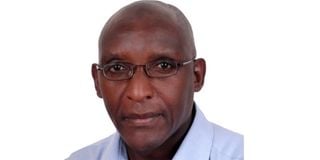Prime
Three more reasons why Museveni will run again

Author: Okodan Akwap. PHOTO/FILE.
What you need to know:
- The East African Community (EAC) has no portion of it. But this would have been an excellent example of an initiative for the Integration of Regional Infrastructure (IITI) project.
Already, I have given two reasons why President Museveni will be on the ballot in the 2026 presidential race. (See, ‘Will Buganda return to NRM after 2026?’ Daily Monitor, November 26.)
Here are three more reasons. The third one is oil. Lately, nothing gets President Museveni more highly inflammable than when he trashes the European Parliament’s resolution to delay the East African Crude Oil Pipeline (EACOP) project (A better name for this project is Uganda-Tanzania Crude Oil Pipeline (UTCOP), which covers 1,443 kilometres from Hoima in western Uganda to the port of Tanga in Tanzania).
The East African Community (EAC) has no portion of it. But this would have been an excellent example of an initiative for the Integration of Regional Infrastructure (IITI) project. For strategic reasons, Mr Museveni excluded Kenya, Rwanda, Burundi, South Sudan and DR Congo. He chose to share the project with Tanzania and two global partners with the technical and financial muscle to get the oil to the coast.
This is very significant. It shows Mr Museveni’s long-range planning and intention to stay put as President. Perhaps he saw that in the event of global and regional geo-political realignments in a new world order, Tanzania could be a natural ideological ally to Uganda.
How did NRM get to “discover” this oil? Simple. Successive administrations in Uganda – colonialists, Obote I, Idi Amin and Obote II – knew about the potential existence of commercial reserves of oil along the Albertine Graben in western Uganda. But they did not do much beyond making aeromagnetic surveys.
Initially, NRM didn’t do much either until something unusual happened. After remaining tightly sealed underground for possibly hundreds of years, the oil started seeping through the surface in the late 1990s. If NRM was the first government to see evidence of the oil, does it explain why Museveni reportedly called it “his” oil?

President Museveni. PHOTO/ FILE
In 1999, when I was a business reporter with The New Vision, I was sent to Entebbe to interview a government official I only remember as Mr Reuben Kashambuzi about this oil seepage and what it portended for the economy. His excitement was palpable as he showed me – on maps and charts – where the oil was oozing to the surface. I wrote an exciting news feature.
President Museveni went beyond excitement. He engaged foreign investors to determine the quantity of the oil. Confirmation of oil reserves was done in 2006. Subsequently, the government trained many Ugandans who have been working alongside foreign experts for the oil to start gushing around 2026.
In simple English, there’s no way Museveni will step down before “his” oil starts flowing. He needs it to boost his power in negotiations with various players in the international marketplace.
The fourth reason is Uganda Airlines. Too many words have been said and written about this loss-making airline. But what’s hardly being discussed is the fact that this was the first major project in which President Museveni reversed the policy of privatisation imposed on Uganda by the Bretton Woods twins – the World Bank and the International Monetary Fund.
Stripped of its groundhandling facilities at Entebbe International Airport, Uganda Airlines died in 2001. But unexpectedly in 2015, Mr Museveni, through the Presidential Economic Council, directed that a feasibility study be done on reviving the airline. This study and another “business and implementation plan” were done. The airline resumed operations in 2019.
What’s important about these two projects is that by the end of the planning period (roughly 2026), Museveni’s hope is to prove the Bretton Woods twins wrong by showcasing Uganda Airlines as a sustainable public enterprise. Thereafter, Museveni could embark on policy-reversal at a wider level.
The fifth reason is celebrating 40 years in power. Breaking with custom to commemorate 40 years in power, Museveni may permit Bank of Uganda to print and circulate a new Shs100,000 banknote with his portrait on it. Probably nicknamed the Jajja (grandpa), it will ease financial transactions. For instance, 1J will mean Shs100,000, 2J (Shs200,000) and 10J (Shs1m).
Thus, by 2026, Museveni may very well have his army, his oil and his money.
Mr Akwap (PhD) is an associate consultant at Uganda Management Institute



